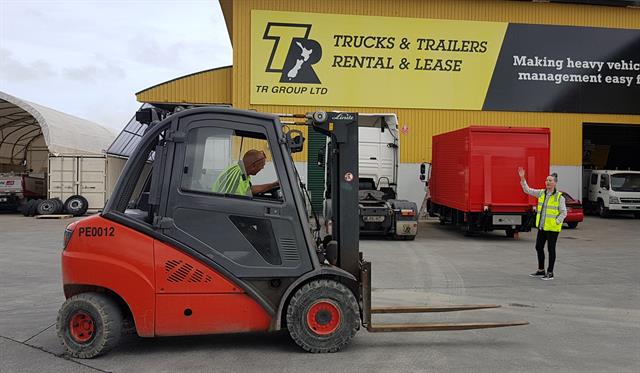 Darren Cottingham |
Darren Cottingham is director of DT Driver Training, a provider of online training courses for drivers of forklifts, trucks and cars.
Painted walkways, cones and barriers are obvious delineations in the forklift vs pedestrian equation, but it's extremely difficult to separate human/forklift interactions in all situations.
Distance between the two is the foundation for safety when pedestrians and forklifts operate in the same area.
You may have heard the term 'exclusion zone'. It has two meanings: either an area designated only for forklifts or an area around a forklift whereby if any person is in it, the forklift should be made safe. The size of the exclusion zone is related to the size of the forklift. For most small forklifts and reach trucks, 3 m is a good start, but for larger forklifts and container handlers, choose a distance which is a bit more than the radius of the turning circle of the forklift. For example, a container handler could have a turning radius of around 6-7 m. Picking a distance greater than the turning radius means that even if the forklift pivots on its driving axis, the rear end swing will not endanger anyone outside the exclusion zone.
 The pedestrian and operator should attract each other's attention |
So, how does a pedestrian enter an exclusion zone and what should the operator do?
The pedestrian and operator should attract each other's attention verbally and/or by using eye contact and hand signals. Be aware of the potential for ambiguity; is that raised hand meant for someone over your shoulder?
The forklift operator should then bring the forklift to a stop, straightening the wheels. This is so that, in a moment of inattention during or after the communication, the operator doesn't drive forward with the result being the counterbalance swinging into the pedestrian standing next to the forklift. The operator should drop the forks to the floor, put the handbrake on and put it in neutral. Then the pedestrian can approach the forklift.
Once the operator and pedestrian have finished their communication, the pedestrian must exit the exclusion zone, then the operator is safe to move away. It's not recommended that a pedestrian talk to a forklift operator while they both continue moving, although there may be scenarios where this is required. The reason for this is that when we're talking to people we often look at them. If we're walking or driving at the same time, that means we're not looking where we're going.
Many newer forklifts come with either proximity detection systems which warn the operator or brake the forklift automatically, or lights which project an exclusion zone on the ground around the forklift. These systems can also be retrofitted to forklifts. If you have a scenario where pedestrians come into contact with your forklifts, those systems are an obvious health and safety choice, especially because humans are not good at judging distances.